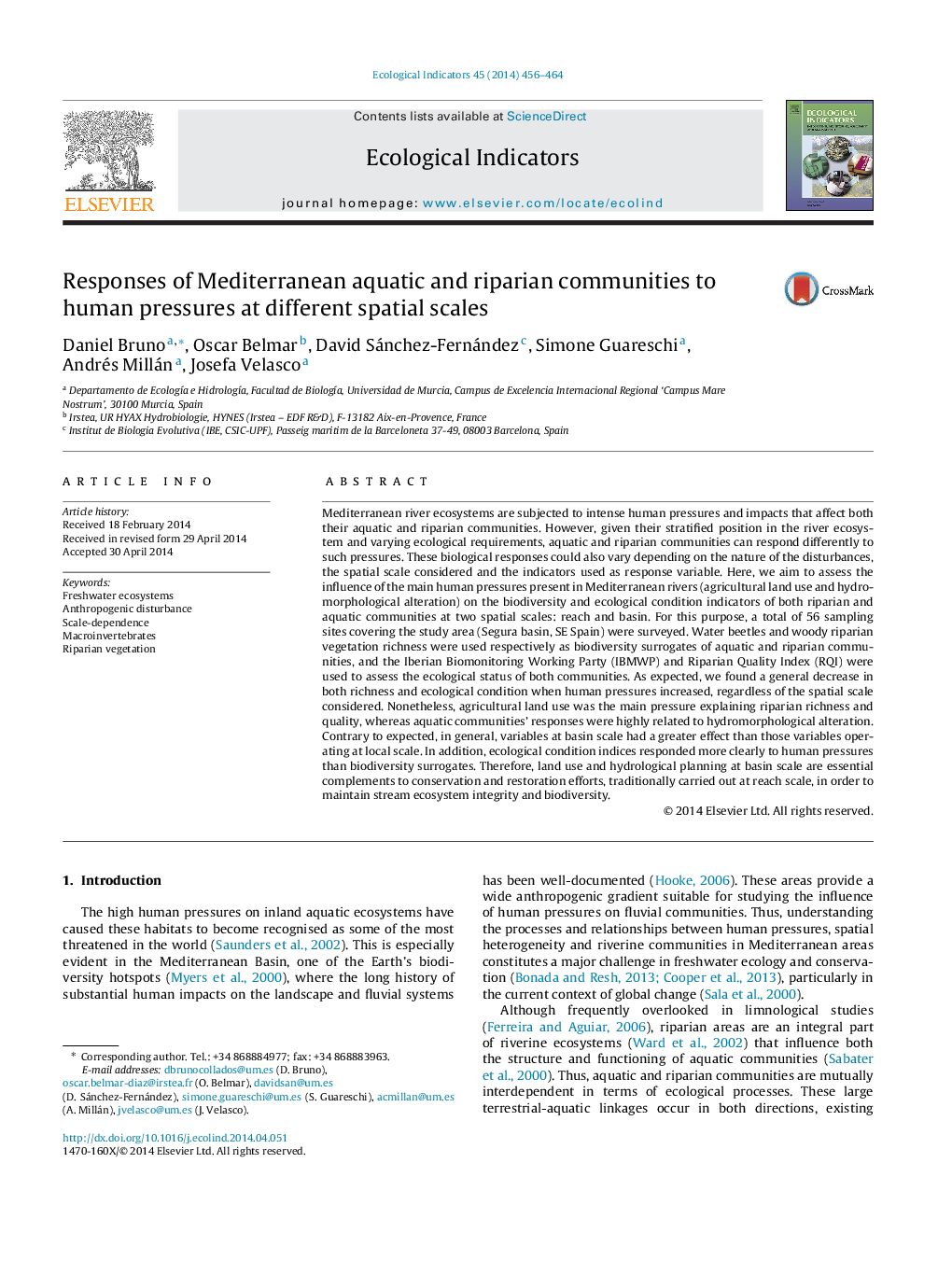| Article ID | Journal | Published Year | Pages | File Type |
|---|---|---|---|---|
| 4373087 | Ecological Indicators | 2014 | 9 Pages |
•We tested the influence of human pressures on both aquatic and riparian communities.•Hydrological alteration affected aquatic macroinvertebrates in a greater extent.•Agriculture was the main human pressure influencing riparian vegetation.•Pressures operating at basin scale had a greater effect than those at local scale.•Quality indices responded better to human pressures than biodiversity surrogates.
Mediterranean river ecosystems are subjected to intense human pressures and impacts that affect both their aquatic and riparian communities. However, given their stratified position in the river ecosystem and varying ecological requirements, aquatic and riparian communities can respond differently to such pressures. These biological responses could also vary depending on the nature of the disturbances, the spatial scale considered and the indicators used as response variable. Here, we aim to assess the influence of the main human pressures present in Mediterranean rivers (agricultural land use and hydromorphological alteration) on the biodiversity and ecological condition indicators of both riparian and aquatic communities at two spatial scales: reach and basin. For this purpose, a total of 56 sampling sites covering the study area (Segura basin, SE Spain) were surveyed. Water beetles and woody riparian vegetation richness were used respectively as biodiversity surrogates of aquatic and riparian communities, and the Iberian Biomonitoring Working Party (IBMWP) and Riparian Quality Index (RQI) were used to assess the ecological status of both communities. As expected, we found a general decrease in both richness and ecological condition when human pressures increased, regardless of the spatial scale considered. Nonetheless, agricultural land use was the main pressure explaining riparian richness and quality, whereas aquatic communities’ responses were highly related to hydromorphological alteration. Contrary to expected, in general, variables at basin scale had a greater effect than those variables operating at local scale. In addition, ecological condition indices responded more clearly to human pressures than biodiversity surrogates. Therefore, land use and hydrological planning at basin scale are essential complements to conservation and restoration efforts, traditionally carried out at reach scale, in order to maintain stream ecosystem integrity and biodiversity.
